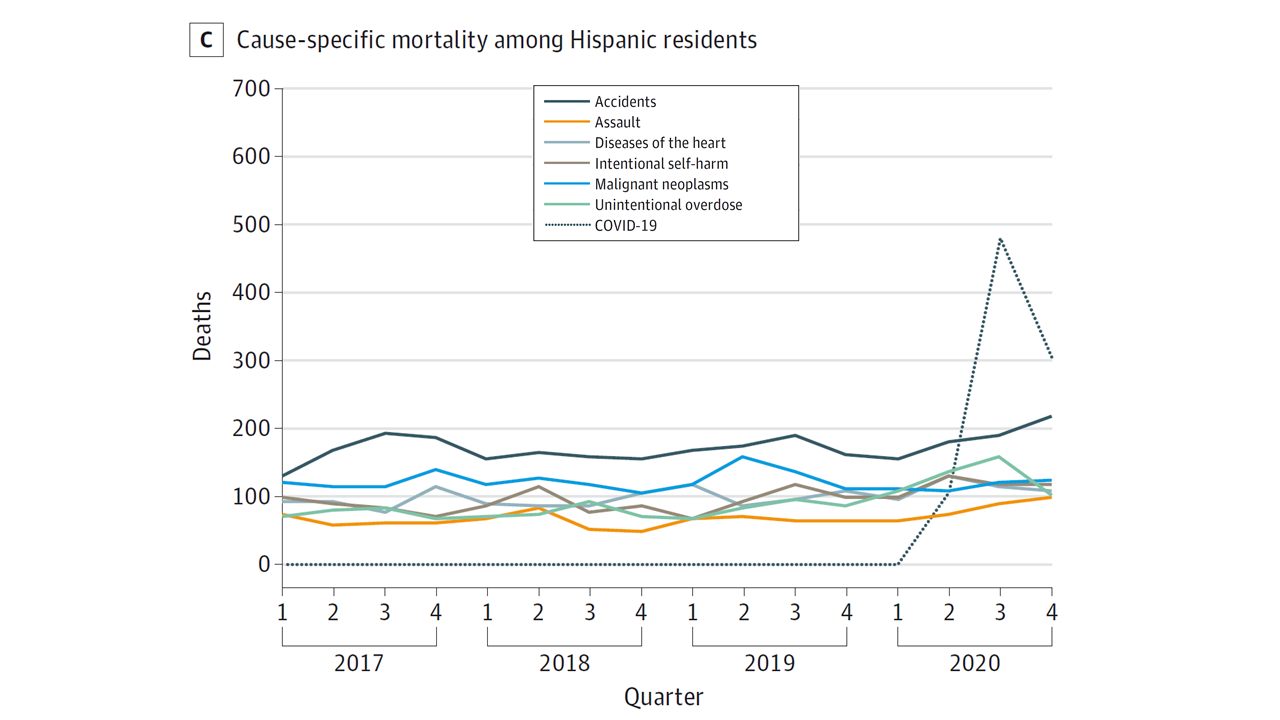COVID-19 Among the Top Causes of Death for 25-44 Year Olds
/A study from Texas highlights the impact the pandemic has had on younger people.
Deaths due to coronavirus occurred most frequently in older age groups, but the greatest relative increase in death rates was not among those in their 60s, 70s, or 80s. In fact, the biggest relative increase in deaths happened in my age group – those between the ages of 25 and 44. This is because the death rates in this age group are pretty low at baseline. For years, the number one cause of death in my age group was not cancer or heart disease, but accidents, followed closely by drug overdoses and suicide.
COVID-19 changed that, as illustrated by this research letter appearing in JAMA Internal Medicine.
It’s an important piece of work, because it counters a still-pervasive narrative that COVID-19 is a disease of the elderly – that young people can shrug it off. True, fewer young people have died from COVID-19 than older people, but more young people have died from COVID-19 during the pandemic then nearly any other cause.
The study looked at data from Texas, which has a fairly good accounting of death rates and causes of death over time. Importantly, Texas has a diverse population, which allowed the authors to evaluate the impact of COVID-19 across racial and ethnic lines.
The time period of study was March to December of 2020 – predominantly the first and second wave of infection in the Lone Star State and before the vaccination program launched.
Prior to COVID-19, deaths in this age group in Texas were pretty similar to the rest of the US – dominated by accidents, drug overdoses, and suicide.
But you see the uptick in COVID-19 deaths starting right around April of 2020, and peaking around August. In the third quarter of 2020, COVID-19 was the #1 cause of death among individuals aged 25-44 in Texas.
These deaths were not randomly distributed – they were profoundly, dramatically more common among Hispanic individuals, as you can see here.
The authors can only speculate why this is. They point out that Hispanics may have had higher exposure rates as they were more likely to be essential workers, and that rings true to me, considering the well-documented outbreaks that occurred in meat-packing plants, for instance.
Now, whenever we discuss COVID deaths, there are people who worry that we are looking at people dying with COVID – as opposed to from COVID.
Looking at the overall death rate again, it’s clear that there wasn’t a commensurate downtrend in deaths from accidents, overdoses, or suicide as the deaths from COVID spiked.
If anything, there seems to be an uptick in deaths due to these causes.
This is borne out by an analysis of excess deaths.
Here’s a graph of observed vs. expected deaths among 25-44 years olds in Texas during the study period.
So, yes, COVID-19 kills young people. It kills them more than virtually any other thing kills young people.
It isn’t just Texas by the way. While this study has more granular data, the CDC has been tracking excess deaths across the country by age group.
The data for the 25-44 year old age group is here.
And what you see is a significant rise above baseline levels starting at the beginning of the pandemic in March 2020 and continuing until only very recently when death rates among my cohort have declined to their historical levels in the setting of increased vaccination rates.
It is better to be young during this pandemic than to be old, that is for sure. But if you are young, it is clearly much better to not become infected with COVID-19. It is, after all, more likely to kill you than just about anything else.
A version of this commentary first appeared on medscape.com.






